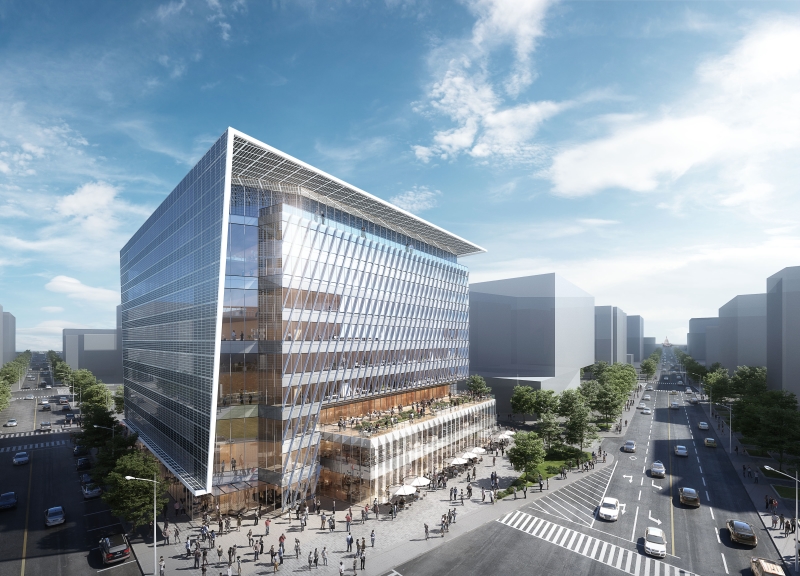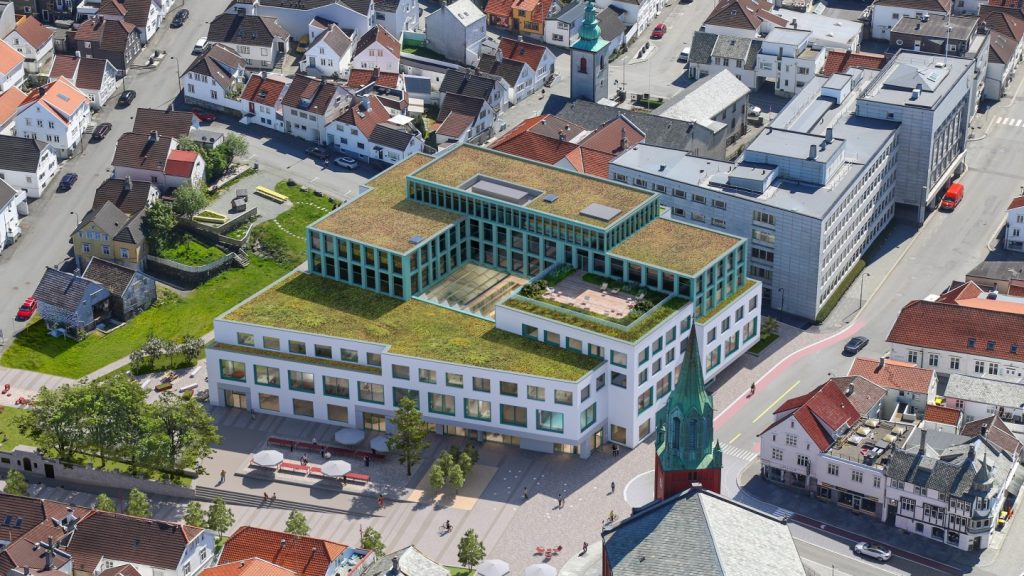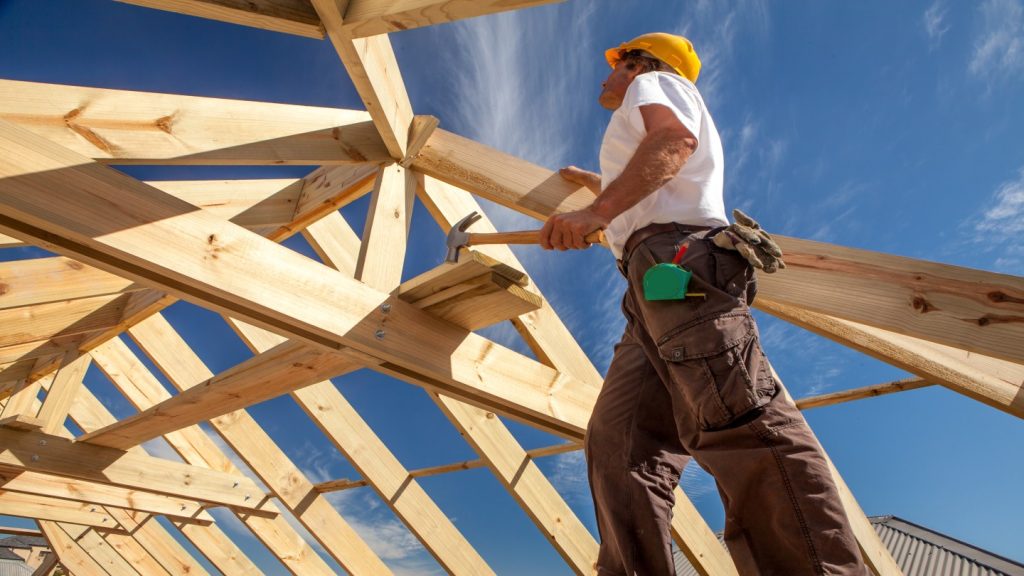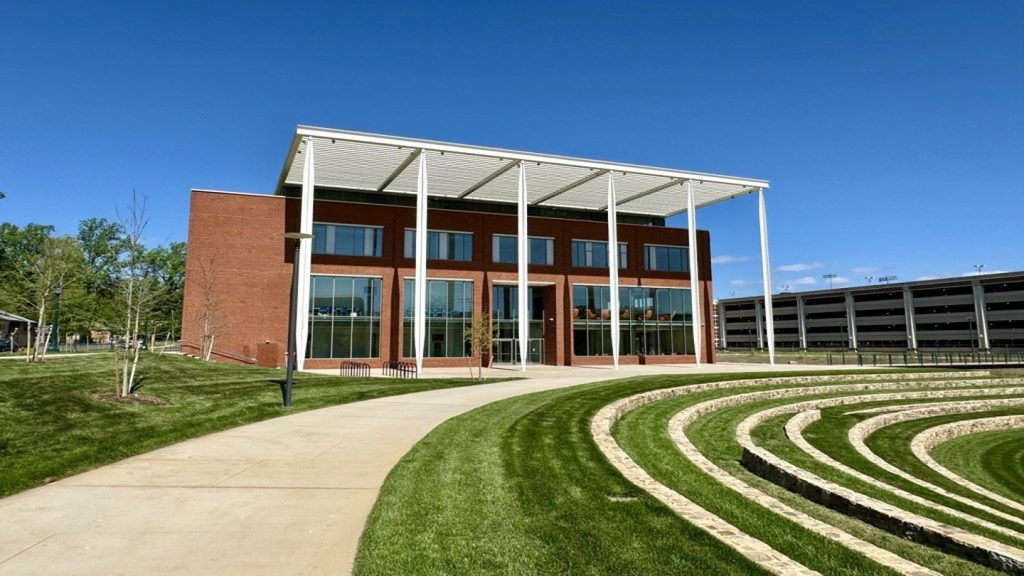
For decades, scientists have been warning the world about climate change and the potentially catastrophic toll that shifting weather patterns could have on our cities and communities. If there was any scepticism that these alerts were premature or overstated in any way, the evidence of the last few years should have blown them away with hurricane force – from bleached coral reefs to the increasing frequency of severe storms and heat waves, it’s clear that the planet’s climate is reaching a crisis point.
In the US, North Atlantic hurricanes have become stronger and more frequent since the early 1980s, while precipitation patterns are changing and devastating wildfires are becoming more commonplace in vulnerable states such as California.
For Jon Penndorf, project manager and sustainability leader at Perkins and Wills’ Washington DC office, the true wake-up call for architects came in 2012, when Hurricane Sandy blew through the Caribbean before raging up the US East Coast, culminating in a major disaster in New York City and surrounding areas, which suffered more than 50 deaths, extensive power outages and billions of dollars in damage to buildings and infrastructure.
“We’ve seen lots of different climatic events throughout the United States before, but very few have hit a huge metropolitan area like [Sandy] did New York City,” he says. “I think that was the beginning of the wake-up call. Since then, I think the design community is more attuned to the frequency and severity of these types of events, for sure.”
As concern about our ever-more volatile climate has grown, so too has the concept of climate resilience in architecture. Buildings today, the thinking goes, have to do more than simply stay upright over a lifespan of 20 years or so – they have to be able to withstand the worst that the unpredictable weather patterns can throw at them.
“I think it’s the next chapter in sustainability,” says Penndorf. “It’s not enough just to talk about energy and water conservation. It’s also about flexibility, adaptability, and the ability of a structure to weather a crisis event.”
How well do you really know your competitors?
Access the most comprehensive Company Profiles on the market, powered by GlobalData. Save hours of research. Gain competitive edge.

Thank you!
Your download email will arrive shortly
Not ready to buy yet? Download a free sample
We are confident about the unique quality of our Company Profiles. However, we want you to make the most beneficial decision for your business, so we offer a free sample that you can download by submitting the below form
By GlobalDataNewbuilds designed to withstand climate chaos
With climate risks increasingly coming into focus, the largest architecture firms such as Perkins and Will have started contributing to regional adaptation efforts – the company’s DC office was hired to write Climate Ready DC, the city’s official climate adaptation plan – as well as incorporating resilience as a core consideration during the design phase of newbuild projects.
“We make sure that every project in the office is assessed in terms of resilience over its stated lifespan, to reduce the risk that it won’t perform in the way it was designed,” says Asif Din, who joined Perkins and Wills’ London office as sustainability director in January.
“The biggest risk is that somebody designs something and never uses it, and when they do rely on it, it doesn’t work. It needs to be in the brief formulation that certain aspects – the top five shocks and stresses – are imperative to the client and to make sure that those risks are actually tackled within the design.”
The exact climate adaptation methods – whether it’s passive ventilation to prevent overheating, expanded water storage, off-grid back-up power or mitigation of flood risks – will change dramatically based on the building usage and geographic location, and Penndorf notes that thorough risk analysis lies at the heart of climate-resilient design.
“Risks can be hyper-local,” he says. “In DC, when we did the climate plan, we boiled down the three major risks to extreme heat, extreme precipitation, and a combined sea level rise and storm surge. But those aren’t the right risks for every other location.
“A good example is in Houston; they suffered through Hurricane Harvey a couple of years ago. We’re actively looking at upsizing roof drains, for example, greater than what the code requires. So looking at what those risks are and how the design can mitigate some of those risks, whether that be an ability to protect glazing; whether it be increasing the ballistics level of your building envelope because of hurricane-force projectiles, or making sure there are safe havens in the building for the occupants.”
Addressing vulnerabilities after a disaster is good, but baking resilient features into a design before disaster strikes is even better. A perfect example is Spaulding Rehabilitation Hospital on the Boston riverfront, which Perkins and Will designed for client Partners Healthcare. The facility’s design was changed midway through to raise the ground floor a few feet to above the projected flood level, as well as adding landscaped berms between the hospital and the waterfront. When Hurricane Sandy hit in 2012, while the project was still late in the construction phase, the building took the hit and stayed dry.
Perkins and Will recently attempted to bring all of its climate resilience research together in the ‘Revolution: Changing the Office Paradigm’ project, a proposal for an office building that is resilient and flexible by design. Incorporating features such as a solar canopy to provide energy and shade, a system to capture rainwater and make it potable and flood protection measures, the project remains a proposal for now, but that could change.
“That particular project is still a proposal,” says Penndorf. “We are in the process of designing our own new office space, which we’ll be moving into next year. There is some significant discussion about that building and how it can be more resilient. And we are having conversations with other clients in a more informal way about how buildings can be more resilient and what that means for them. I think we’re seeing bits and pieces of it creep into projects that are underway, and it’s just a matter of time before the full idea becomes a reality.”
Linking sustainability and resilience
Of course, as Din notes, understanding the risks and the best ways to mitigate them isn’t the same as actually persuading a newbuild client that paying extra now to protect against tomorrow’s climate risks is the best move financially.
“It’s becoming more of a hot topic in terms of what people are interested in,” he says. “How much they actually believe in it, I think, is a bit different. Energy is still cheap overall, and carbon is still cheap overall. So if you’re going to take it purely from a financial point of view, there’s not that much incentive for doing it.”
Penndorf argues that effective communication without technical or scientific jargon can simplify the value proposition for clients – boiling the issue down to a set of risks and corresponding actions that would help to address them.
“Not everybody speaks ‘archispeak’, and not everyone speaks the language of climate scientists,” Penndorf says. “We use what we call the three lenses – the social, environmental and economic lenses – to paint the picture of what the risks and vulnerabilities are, and what the result could be using good design practices. Putting it in terms that everyone can understand makes it a lot easier for people to accept.”
A strong argument to persuade reluctant clients is showing the links between resilience and sustainability more broadly. In many cases a good sustainable design choice also promotes resilience, creating a kind of environmental synergy that fills two needs with one deed.
“Energy independence is probably one of the easiest ways to be resilient,” Penndorf says. “You can weather storms, power outages, heat waves, power surges – when there are strains on the electrical grid, your structure can essentially go off the grid. It’s great for energy conservation, for reducing pollution, reducing fossil fuel dependence, but it’s also a resilience tactic.”
Din adds: “If it’s a good passive building, it tends to be very ‘kick-proof’, for want of a better expression. It has natural capacitance – you don’t need to charge up a concrete block, or make sure it’s working properly. The passive design just works. If you’re talking about a highly sustainable building that relies heavily on technology, personally that’s the building that I hate. It requires so much maintenance, so much human interaction that the risk factors go up significantly.”
Adapting to a changing climate
The design community tends to talk more extensively about innovations in the newbuild space, but resilience is as much a problem for existing infrastructure as for newbuilds, or even more so because of the legacy of outdated design and construction methods.
In the UK – whose remarkably mild climate hasn’t seen the same level of destructive events in the US and elsewhere – a Committee on Climate Change (CCC) report published in February found that British homes are largely unfit to face the challenges of a changing climate, with 4.5 million homes overheating even in relatively cool summers, 1.8 million people living in flood-prone areas and an average household water consumption level that is higher than in many other European countries.
“As the climate continues to change, our homes are becoming increasingly uncomfortable and unsafe,” said CCC Adaptation Committee chair Baroness Brown. “This will continue unless we take steps now to adapt them for higher temperatures, flooding and water scarcity. Our report shows that this work has barely begun.”
Improving insulation in homes is one of the main methods being pursued to improve energy efficiency and resilience, but Din notes that without a holistic approach, isolated efforts are destined to stall or even cause unintended harm.
“People are just focused on insulation, and by doing that they’ve actually made matters worse in quite a few existing buildings by raising the condensation risk, effectively creating unhealthy environments. It happened with the energy companies in terms of upgrading social housing – creating damp patches, high moisture levels on the inside, inadequate ventilation. It’s not one magic bullet.”
Penndorf notes encouraging steps on resilience from many US cities, whether through participating in schemes like the Rockefeller Foundation’s 100 Resilient Cities programme or by hiring chief resilience officers at the municipal level.
Din, meanwhile, argues that change from the top is too slow, with years-long gaps before regulatory proposals actually become law. He is more enthusiastic about change coming from below as average citizens begin to expect more effective action from their employers or local governments.
He also notes that in the UK (and perhaps elsewhere), it may be the financial institutions that play the decisive role to incentivise the broad changes that will lead to more resilient buildings and infrastructure.
“It’s going to come from places like insurance and mortgage [providers],” he says.
“Traditionally a house was only valued on its asset over a 20-year lifespan because that’s what a mortgage term actually was. I think in terms of the financial models that is actually now changing. Quite a lot of pension companies and others are really interested in whether they’ll actually have a stranded asset at the end of the day – an asset that they can’t really deal with and can’t be upgraded.
“Hopefully what we’ll see is that mortgage companies will ask for more robust and climate-resilient buildings overall, and that’s what they should be lending on. But that’s a hope.”






